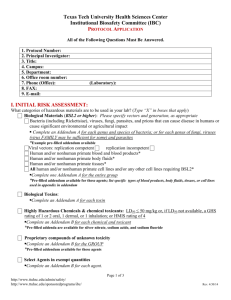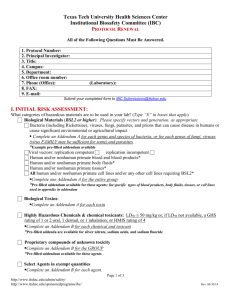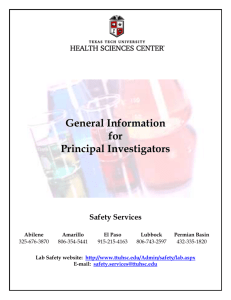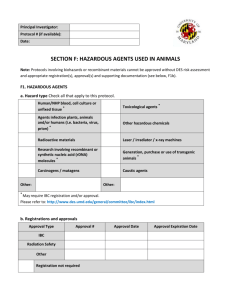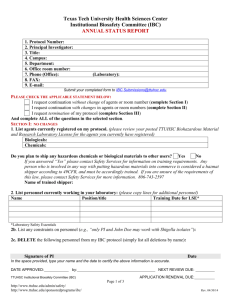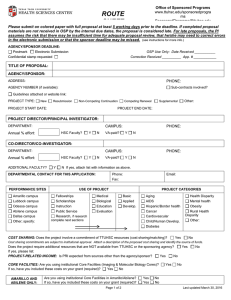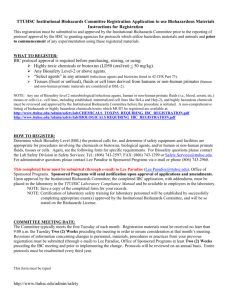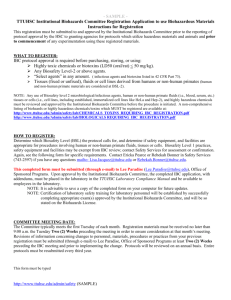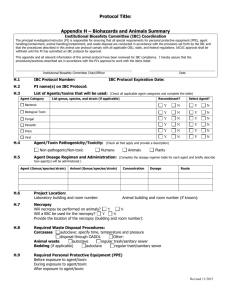IBC Addendum B Form
advertisement
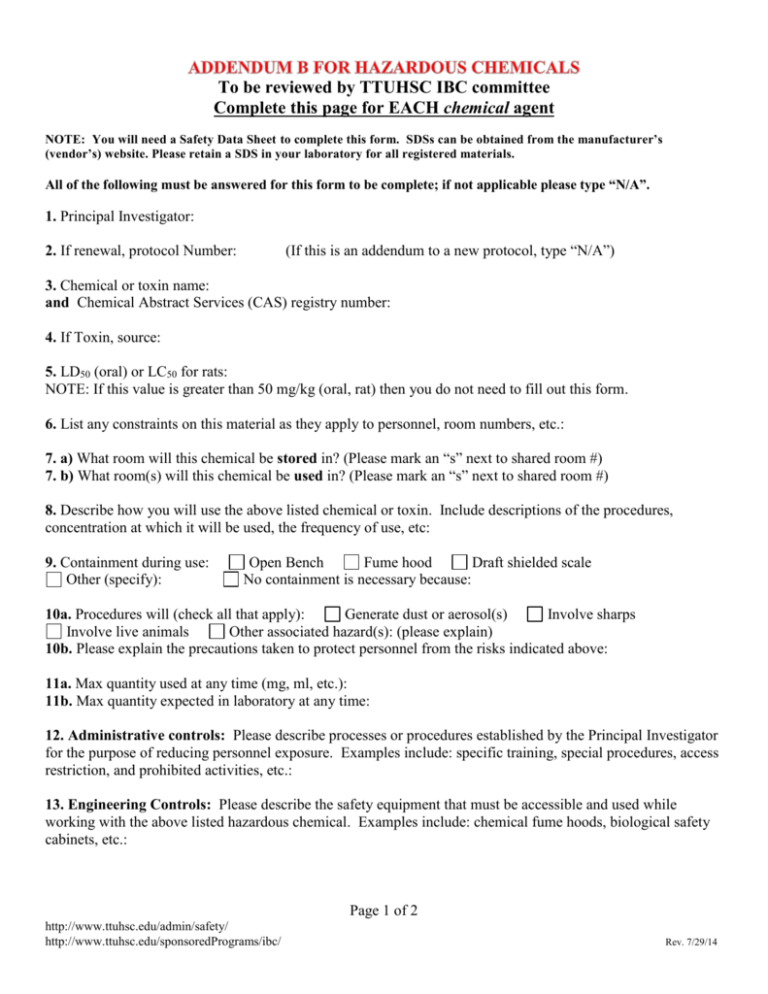
To be reviewed by TTUHSC IBC committee Complete this page for EACH chemical agent NOTE: You will need a Safety Data Sheet to complete this form. SDSs can be obtained from the manufacturer’s (vendor’s) website. Please retain a SDS in your laboratory for all registered materials. All of the following must be answered for this form to be complete; if not applicable please type “N/A”. 1. Principal Investigator: (If this is an addendum to a new protocol, type “N/A”) 2. If renewal, protocol Number: 3. Chemical or toxin name: and Chemical Abstract Services (CAS) registry number: 4. If Toxin, source: 5. LD50 (oral) or LC50 for rats: NOTE: If this value is greater than 50 mg/kg (oral, rat) then you do not need to fill out this form. 6. List any constraints on this material as they apply to personnel, room numbers, etc.: 7. a) What room will this chemical be stored in? (Please mark an “s” next to shared room #) 7. b) What room(s) will this chemical be used in? (Please mark an “s” next to shared room #) 8. Describe how you will use the above listed chemical or toxin. Include descriptions of the procedures, concentration at which it will be used, the frequency of use, etc: 9. Containment during use: Other (specify): Open Bench Fume hood Draft shielded scale No containment is necessary because: 10a. Procedures will (check all that apply): Generate dust or aerosol(s) Involve sharps Involve live animals Other associated hazard(s): (please explain) 10b. Please explain the precautions taken to protect personnel from the risks indicated above: 11a. Max quantity used at any time (mg, ml, etc.): 11b. Max quantity expected in laboratory at any time: 12. Administrative controls: Please describe processes or procedures established by the Principal Investigator for the purpose of reducing personnel exposure. Examples include: specific training, special procedures, access restriction, and prohibited activities, etc.: 13. Engineering Controls: Please describe the safety equipment that must be accessible and used while working with the above listed hazardous chemical. Examples include: chemical fume hoods, biological safety cabinets, etc.: Page 1 of 2 http://www.ttuhsc.edu/admin/safety/ http://www.ttuhsc.edu/sponsoredPrograms/ibc/ Rev. 7/29/14 IBC Addendum B - Hazardous Chemicals 14. Personal Protective Equipment: Please describe the personal protective equipment that must be accessible and used while working with the above named hazardous chemical. Examples include: gloves, eye protection, lab coats, etc. Please be specific. 15. Waste Disposal: What kind of hazardous waste, if any, will be generated from working with this chemical, and how will you dispose of it? What decontamination procedures will take place in order to assure safe and proper waste disposal? 16. Emergency Procedures: Please describe the methods you will use to clean up an accidental spill of this chemical (either large or small scale) or to execute an emergency shut down in the event of a power outage or other emergency while performing experiments with this chemical. Be sure to include: The concentration and contact time of any cleaning or deactivating agents. Spill kits and any other necessary supplies to be used. Signs and symptoms of exposures (e.g., appearance, odor, irritation, etc.) Emergency procedures Example: in the event of a large spill, would you evacuate the area? Who would you call for help? Address realistic worst case occurrences. Note: “N/A” is not an acceptable answer. Page 2 of 2 http://www.ttuhsc.edu/admin/safety/ http://www.ttuhsc.edu/sponsoredPrograms/ibc/ Rev. 7/29/14

